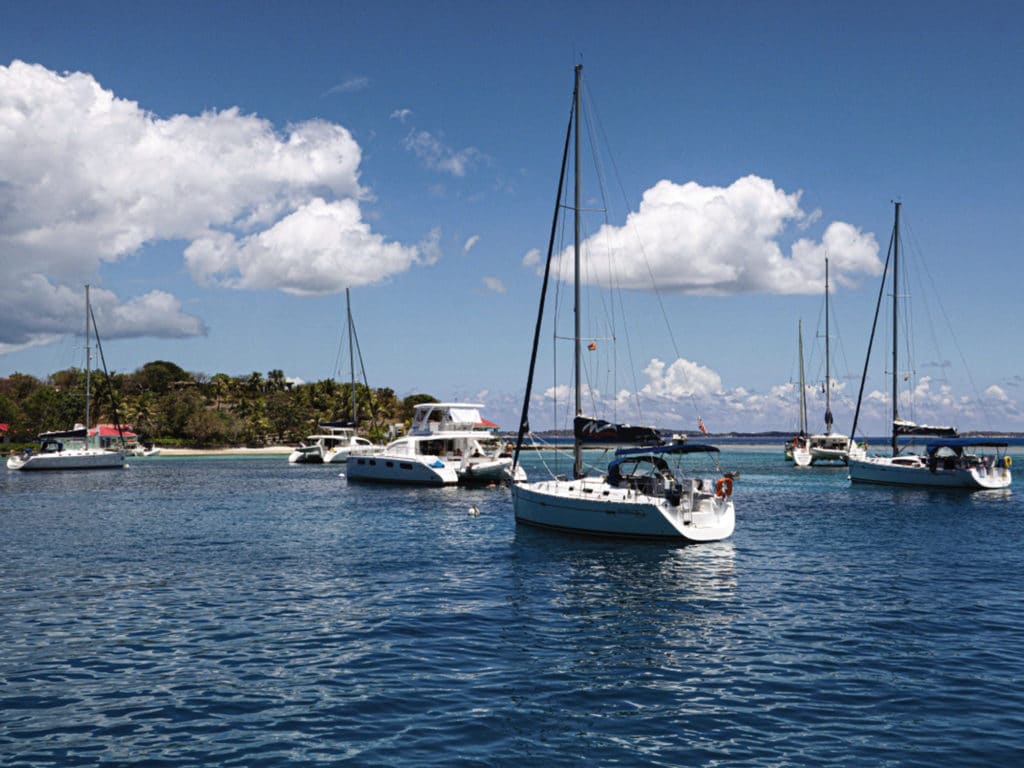
Boat life isn’t one-size-fits-all. Cruising can be played out in myriad sailboat styles: shiny new or classic, Bristol or project, big budget or micro. But finding the right boat to cruise in challenges many buyers, regardless of budget.
Selecting the boat that fits begins with recognizing that all sailboats are a collection of compromises, and the goal is to find the compromises you can live with. This starts with the crew’s sailing intentions: how many people, for how long and where to? Then add two important filters: First, what resources do you have to buy and prepare the boat for sailing away? Second, what are your personal preferences? The must-have, must-not-have and would-really-like-to-have lists vary from one crew to the next.
There are other practical considerations to consider: How important is a quick resale or depreciation? Is the geography to search defined by the plan? Is a better-equipped boat worth a premium in order to save refit weeks on a time-bounded cruise? Here are insights from a variety of paths toward finding the right boat, through the lenses of a half-dozen sabbatical cruisers with varying priorities.
A former charter boat: Abeona
When planning their sabbatical from the San Francisco Bay area, the Milums envisioned a waterborne family version of the round-the-world backpacking journey Jeff and Jen took on their honeymoon year. Jeff leaned on prior experience: His parents cruised an aluminum cutter for 15 years, and he’d logged meaningful time aboard. The rest of the family, including kids Zoe, 8, and Jackson, 11, was new to sailing.
“For a sabbatical cruise, our goals in selecting a boat centered on finding a catamaran that could fit our family, was capable of bluewater sailing, that was in the right region, that fit our budget, and that minimized the risk of losing money in the buy/sell transaction,” Jeff says. Other factors included comfort for the inexperienced family members and space for gear (Jeff is a passionate waterman, from surfing to waterskiing to diving). They planned on selling investments for the boat purchase, so resale value was an important upfront consideration.
These characteristics led them to the value proposition of buying a catamaran out of charter. It also made them focus less on specific features: It didn’t matter as much if the galley was up or down, how many heads there were, or the color of the settee covers. “We bought a Catana 42 in the Caribbean. We picked a model that felt like less of a commodity, planned to ‘de-charterize’ it, move from a region where boats typically cost less—St. Martin—to a region where they cost more—New England—and benefit from the free replacement of both engines due to an emissions recall.”
A charter boat wasn’t their first choice, but Abeona had the right mix of features, at the right price and location.
Former charter boats get panned for their hard use, but that’s an unfair oversimplification. It does mean entering the transaction with an eye to where hard use translates into expenses, what investment might be needed to refit, and how that impacts the net cost. Jeff put in many hours at the outset of their sabbatical on upgrades to the solar panels, battery bank, plumbing and electrical systems on board. But what that may have cost in early shakedown time came around in the big picture. The Milums cruised for several months longer than their original one-year plan. And what’s more, smart planning plus market dynamics enabled them to sell their sabbatical boat for more than their original purchase price.
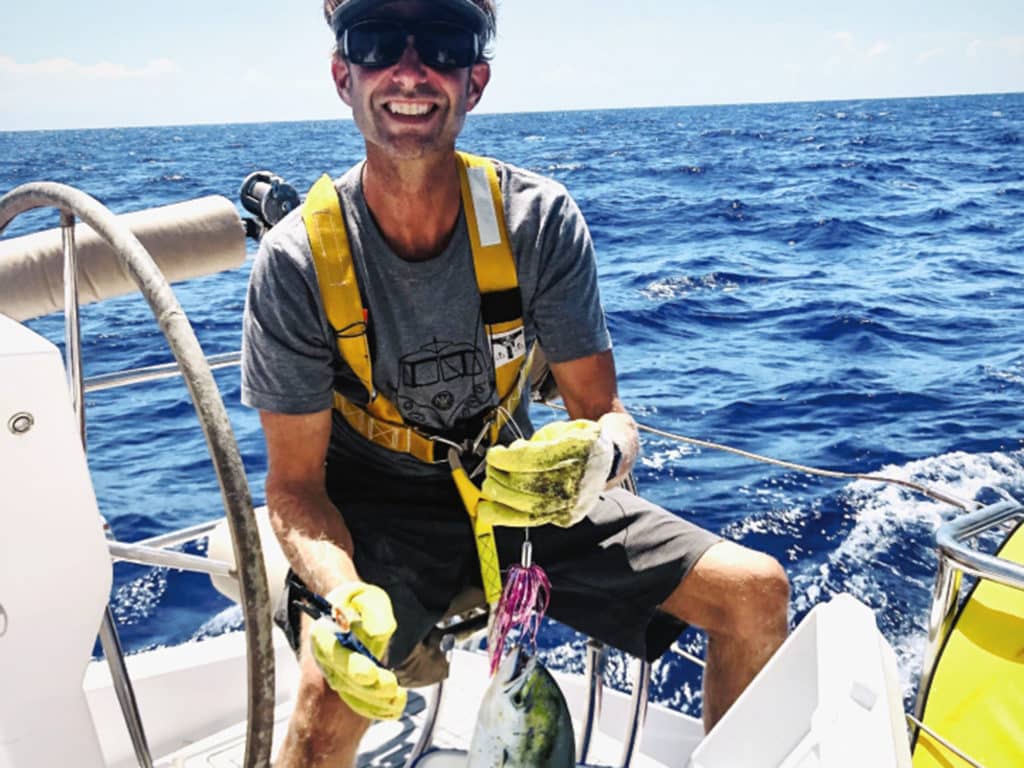
“We can’t imagine another adventure that would have met our goals as well as cruising did,” Jeff writes from back home in Marin County, California. But he acknowledges that in the end, they may have cruised even beyond the 16 months they were out—had Abeona included a few more creature comforts. Still, while much of their experience was defined by COVID-19, the family reflects positively. Not only did they realize goals laid out in a visioning exercise together, they also found unanticipated joys. “We all really fell in love with the unique and all-encompassing aspects of the lifestyle, from the never-ending exploration to the togetherness you share as a family, and the unique cultural exposure to the complete connection with nature.”
The intercontinental purchase: Atmospheric
Pandemic restrictions have made remote purchase the only option for many hopeful cruisers. One of those was the Webber family, South African transplants to Australia. Their goal: to cruise the Caribbean for a couple of years, and maybe sail back to Australia. But Greg and Shani (and kids Indy, 15, and Griffin, 10) were unable to travel to look at boats in advance because Australia was not allowing citizens to depart. When a travel-exemption process commenced for those committed to living outside the country, they jumped at the opportunity to set plans in motion. It came with a catch: They wouldn’t be able to bounce out and back. It had to be the start of their journey as a family.
RELATED: How To Buy a Sailboat
“Budget was the biggest constraint for us,” Shani says. Without room for weeks of traveling to find the right boat, they needed to purchase it before flying halfway around the world. “We agreed that we would not sell our home or take a loan, which meant we needed to save funds for the boat purchase and living expenses.” Because they might cross the Pacific Ocean, an offshore-appropriate boat was important to them.
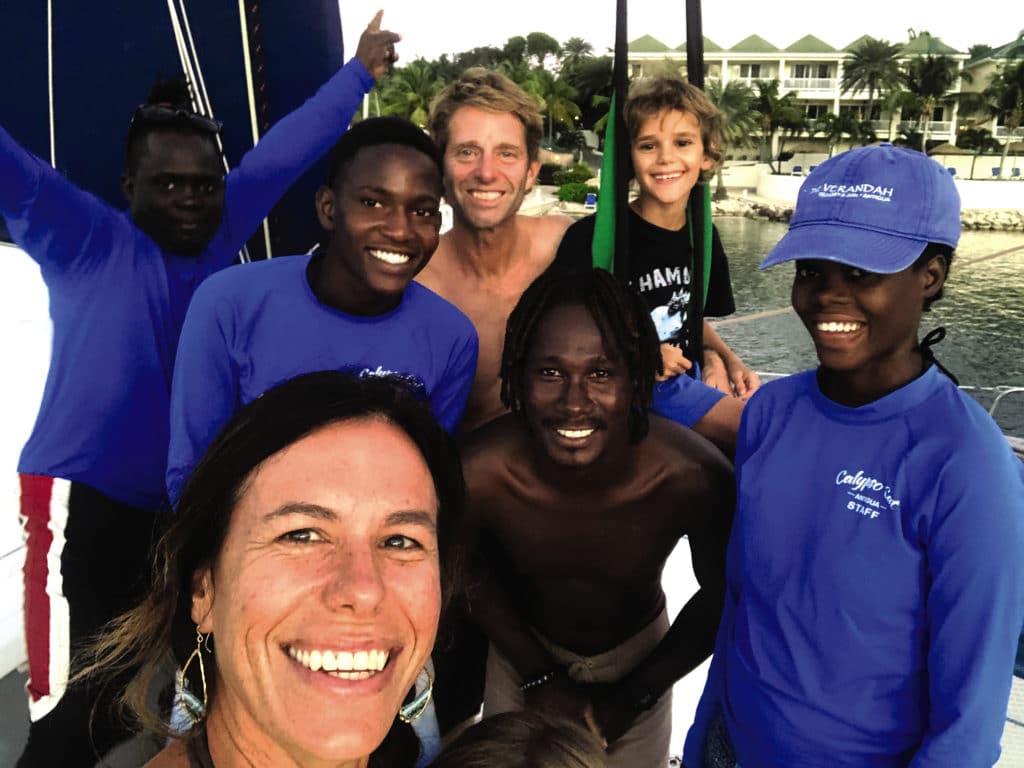
The Webbers had about two months from the time they were granted an exemption before their flights, so they fast-tracked the boat search in late 2020. “The market was picked clean by the boat-buying rush caused by COVID. We were seriously considering two boats in the Caribbean, but neither was the bluewater boat we envisioned.” With kids four-and-a-half years apart, three cabins were essential—and a tough feature to find in a boat they could afford. Total budget was $110,000, including any refit needs or equipment gaps. “When a boat that was not on the market came available to us in the Chesapeake through networking, we were able to fulfill all our wants and wishes while remaining within our budget. We consider ourselves lucky.”
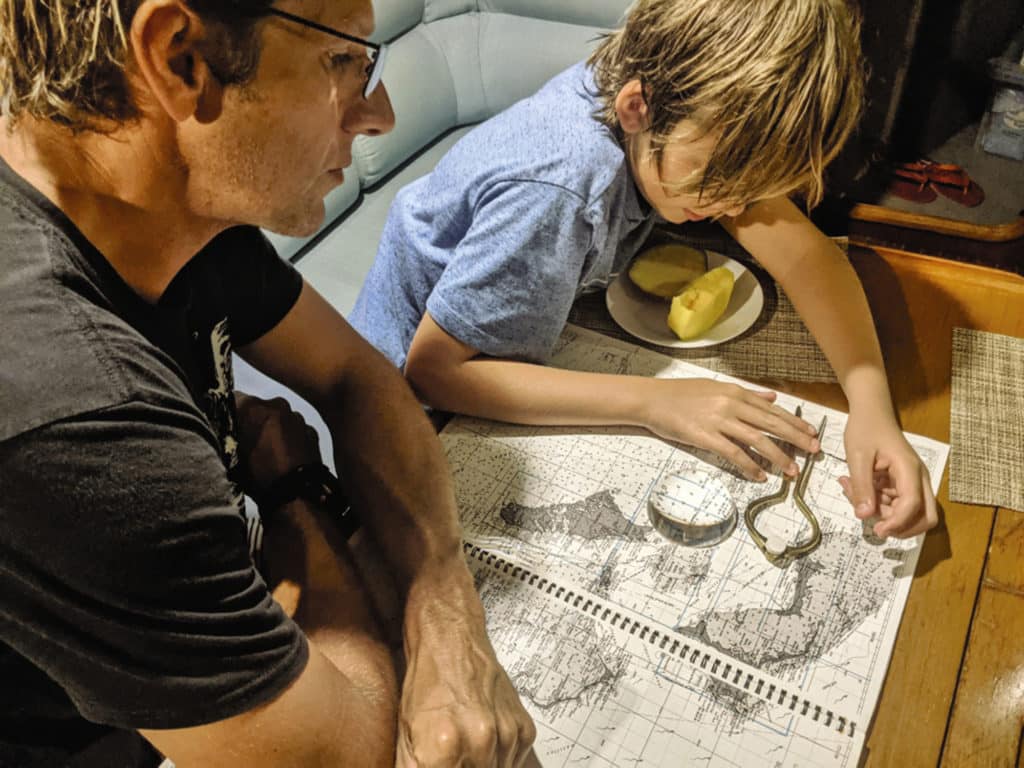
While purchasing a boat sight unseen would normally be considered unwise, pandemic reality pushed norms—and provided lessons to manage the risk in more-normal times. In this case, it helped that the sellers were known to trusted friends. An independent sailor visited the boat to provide an unbiased assessment. A recommended surveyor completed the work with a hired party as the buyer’s stand-in. And then, they waited to sign on the dotted line until they arrived and finally clapped eyes on the vessel themselves.
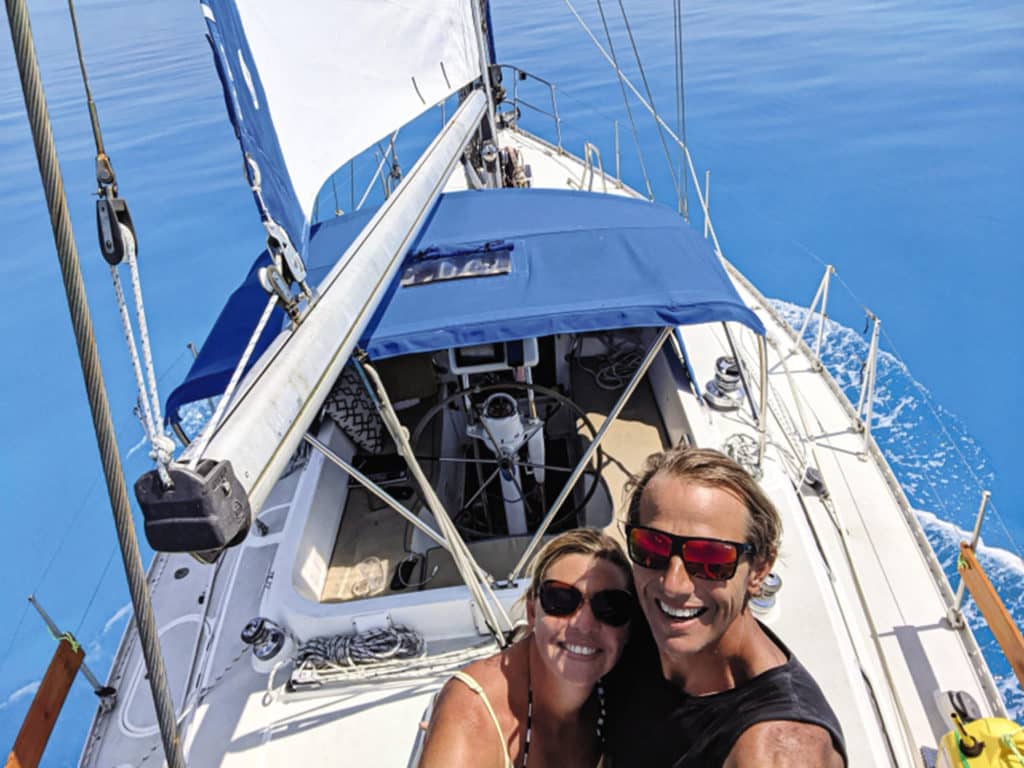
Starting slowly from Deltaville, Virginia, on their Moody 425, Atmospheric, the Webbers got to know their boat while heading south down the Intracoastal Waterway. Now, more than six months later and several thousand miles under the keel, they’ve realized the bigger boats that intimidated them as novice sailors would have been manageable too. “If we were to plan to live aboard for more years—perhaps more than three—we’d now consider a smaller catamaran or a larger monohull, simply for slightly more personal space per crewmember.” But this boat suits them well, and makes a happy home and sunset viewing platform for wherever the journey will ultimately take them.
Buying the dream boat: Colibri
Fresh out of college, Aska and David Krantz spent two and a half years backpacking through Latin America, central Europe and southern Africa. The joy of travel and the benefits it brings stayed with them through subsequent years chasing careers, paying mortgages and growing their family. But the lure of travel remained. “We wanted our kids, Natalia (13) and Elena (10), to understand that they are global citizens with a shared sense of responsibility,” the couple recalls. Based on David’s experiences growing up sailing the Chesapeake, plans for a two- to three-year cruising sabbatical took shape.
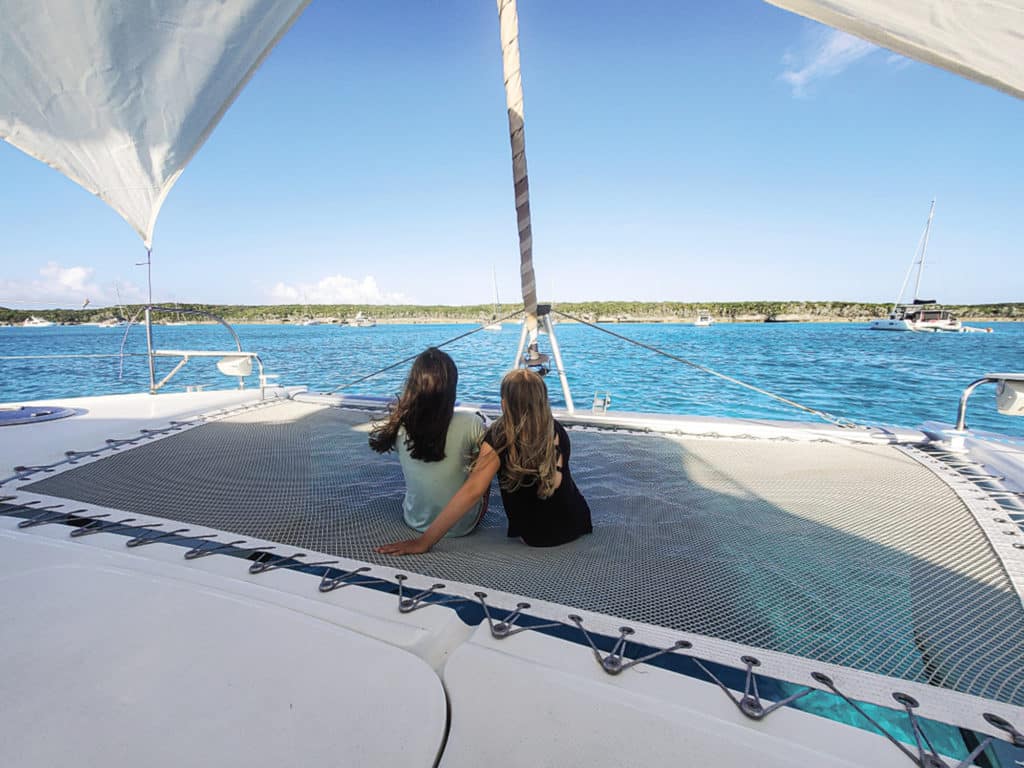
Aska explains: “We originally imagined cruising in a monohull because that’s what we had known and loved. David hadn’t sailed a catamaran until he volunteered as crew on a couple of deliveries in preparation for this sabbatical.” Those experiences made an impression, as did talking to cruising families in cats. But catamarans were well beyond the budget they had set aside. So they changed the budget.
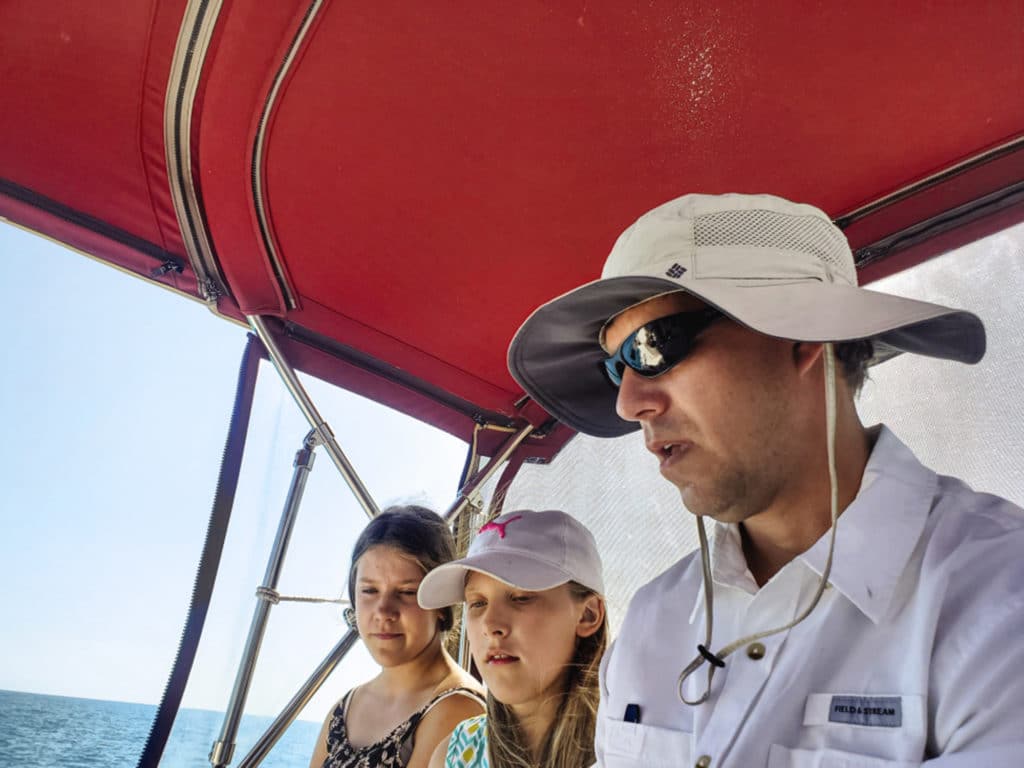
Shifting to buy a catamaran that met their needs required approximately doubling the budget originally planned to buy and outfit a cruising boat. They determined that the big financial moves to enable this were worthwhile. Aska points out that the decision came down to three factors: the strong desire for good early experiences they felt a cat would assure; the probability of readily reselling the boat at the end; and the good fortune of lower interest rates, which increased the amount they could borrow. “This is our dream boat,” the couple says of the Fountaine Pajot Lipari 41 they’ve named Colibri.
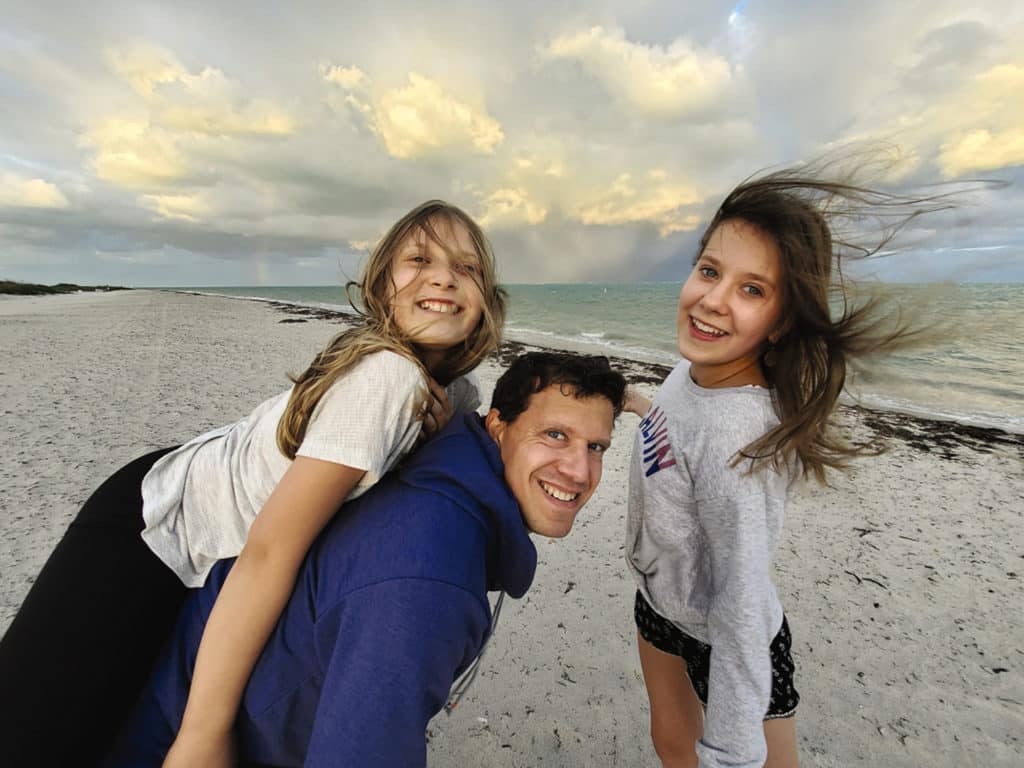
Six months into their sabbatical, they’re meeting all the goals set out as a family before they commenced. (David, a market researcher, led a family exercise on writing a “Why” statement for the journey; “because my parents are making me” was not a permitted response.) They’re trying new things, making friends, connecting with each other, letting go and living with less, and more. Not long after they arrived in the Bahamas this spring, David shared the following comment. A particular bonus? “Reduced screen time for the kids, and especially less social media for the young teen.”
The boat you have? Clara T and Dos Locos
Cruising dreams percolated during lazy days of summertime sailing on Lake Champlain, near Matt and Mary Tryhorne’s Vermont home. They anticipated buying a bigger boat than the family’s Catalina 36 to take their two daughters, Adeline, 11, and Laurel, 8, on a cruising sabbatical.
Meanwhile in Maine, Chris Riley and his wife, Aimee Reiter, cooked up similar plans to sail away with their two boys, Thatcher, 12, and Tristan, 9. They long assumed they’d go with their existing boat, a Pearson 365. The opposite occurred for both families, and for all the right reasons.
RELATED: 10 Best Used Cruising Sailboats
For Chris and Aimee, the cruising dream was something they’d laid out since the early days of their marriage. Over the years, they steadily fixed and flipped a series of boats—finding the Pearson 365 to be a good fit for their family of four. But as plans for their sabbatical drew closer, more space and a few comforts drew them to trade up for a Pearson 424. Chris and his father found Dos Locos on a Florida road trip of docks and marinas. This was the boat that could hold their toys: the paddleboard, surfboard, fishing rods and other gear prioritized by a very active, outdoor-oriented family.
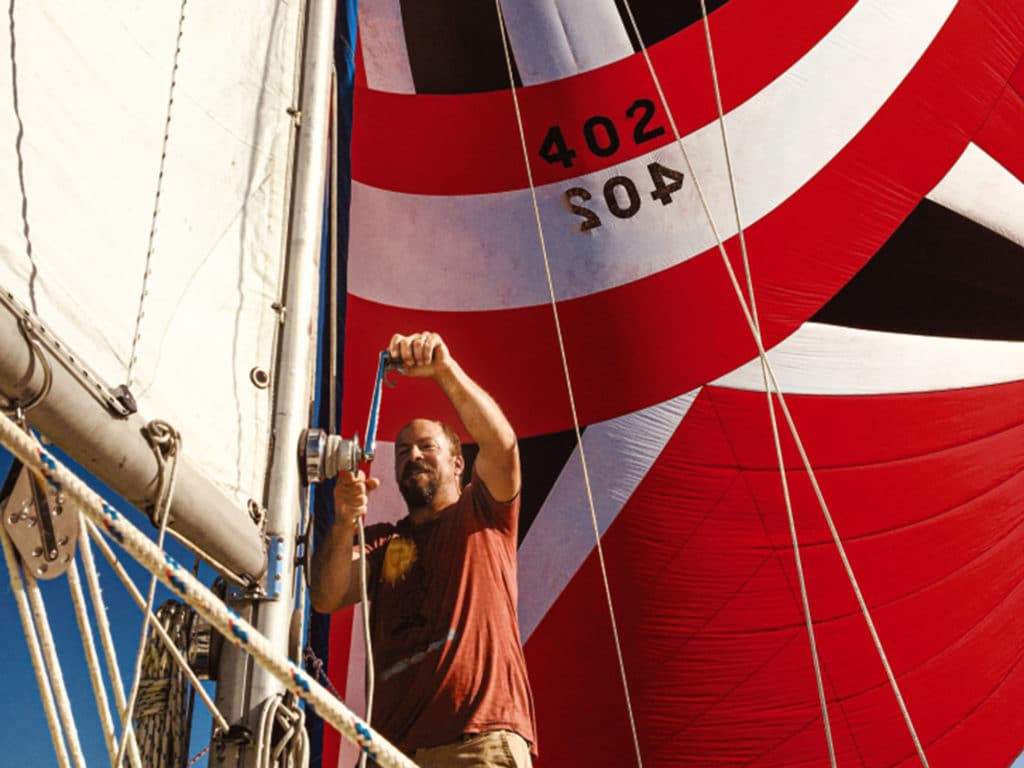
The Tryhornes found that enjoying the range of outdoor fun that Vermont offers competed with sailing. Matt had long craved cruising, but local hiking, biking and river trips to enjoy during warmer months were also appealing. This served to hone their plan to cruise warmer water in the winters, and return home to live and work in the summers. While the dream—in a bigger-picture way—included a bigger boat, this new image favored trying out cruising by going on the boat they had. Mary explains: “If we enjoy this lifestyle and want to keep cruising, even seasonally, we will likely look for a bigger boat. We feel we will learn a lot on this first trip about what works and what is important, and also what type of cruising we ultimately want to do.”
It was a practical decision for this family, but it took a while to commit to going in their Catalina 36. Matt, for whom cruising is the long-held dream, worried about Mary being comfortable enough to keep going. Spending more than 100 nights aboard answered that question. Cooking, sleeping, learning the systems, caring for the children and sailing became second nature for her aboard Clara T. By contrast, the prospect of looking for a new boat seemed unnecessarily overwhelming.
“We had a neighbor in our mooring field with the same boat who kept telling us, ‘You can go on that boat.’ We didn’t think so. Then one beautiful evening, we were sitting in the cockpit, having a drink and watching the sunset while our children slept down below, and had a great lightbulb we-already-have-a-boat moment. With our budget and time constraints, we realized that yes, Clara T was our boat to cruise on.” The Tryhorne family started out from Lake Champlain in summer 2021, bound for the Hudson River and points south.
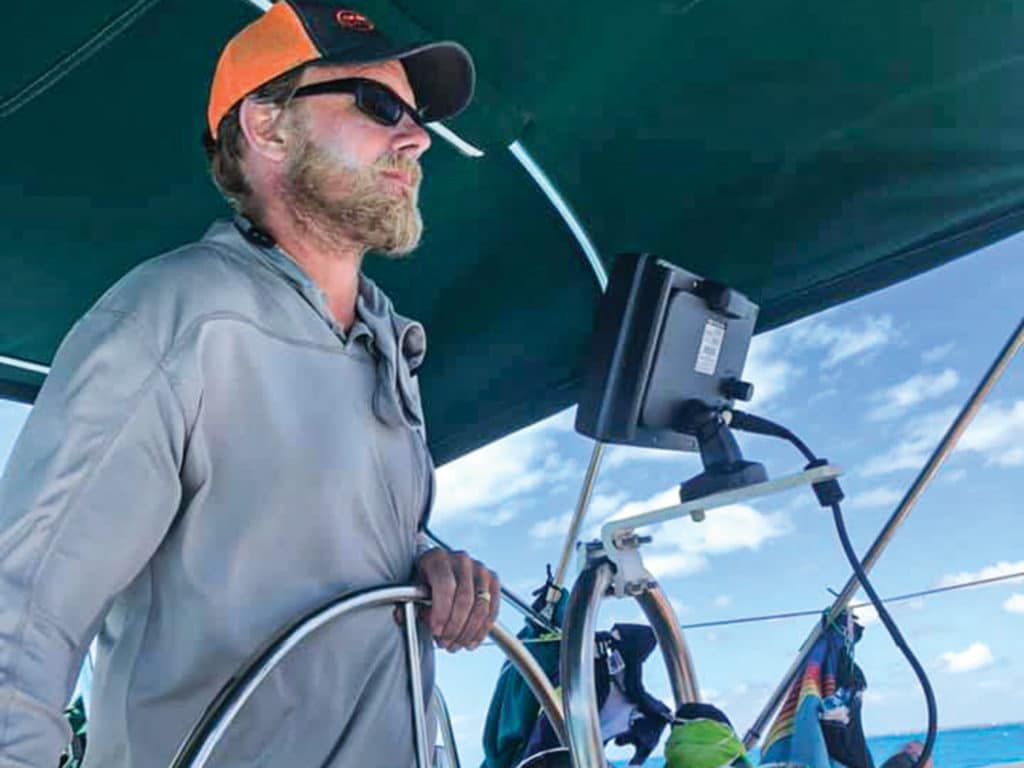
Meanwhile, the Dos Locos crew realized their sabbatical dream “more than I could have ever imagined,” according to Chris. “We wanted a time that was focused on our family with as little distraction as possible. We wanted a time to cultivate the bonds we’d worked so hard building when our children were young. We wanted a time to create something that our boys would use as a foundational experience for much of the rest of their childhood. We wanted a time to connect as a married couple and live more day to day, and deal with the challenges and joys in the best way possible.” They did all this, and now imagine a future trip—on the same boat—which they are refitting for the purpose.
Chartering instead of buying
The Pruitt family—Susan and Clay, and sons Denver, 16, and Hudson, 13—chartered every year—sometimes twice a year—to feed their dream of cruising. “We have been ‘credit-card captains’ for about 10 years,” Susan says, “and really wanted to fulfill a vision of sailing the high seas with our kids in tow.” Their original goal for an ocean-capable boat kept getting pushed out. “We were not comfortable with the long-term commitment and all the extra expenses that follow buying a boat.” Meanwhile, as their two sons prepared to enter junior high and high school, it felt like time was running out. Turning pages in Cruising World, Susan saw a tiny ad for long-term chartering, and a lightbulb went off.
Their plans were made on short notice: five weeks until departure on a six-month sabbatical. The months ended up divided between two catamarans from the same charter outfit. Changing boats provided meaningful learning about what was important to them.
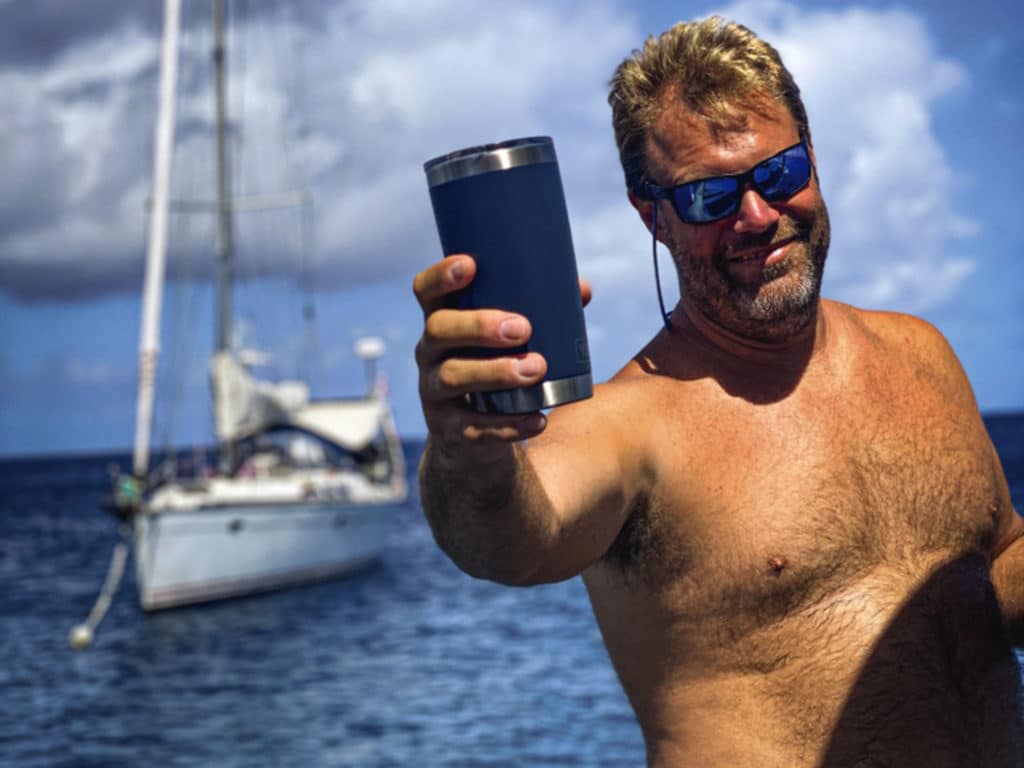
“We were on the Leopard 40 for nearly three months. It was a perfect boat to start on because it was easy to manage. It also taught us what we didn’t like.” The boat felt cramped, worn and maintenance-hungry. “When COVID hit, we had to get the boat back into the home waters of the BVI in case we were forced to return home. Guess what? So did everyone else who had charter boats out!” They negotiated for a newer Leopard 48 from the languishing fleet for the second half of their charter. “It was a game-changer for our ‘seabbatical,’” Susan says. “We finally had our own spaces, and more than one person could fit in the galley.”
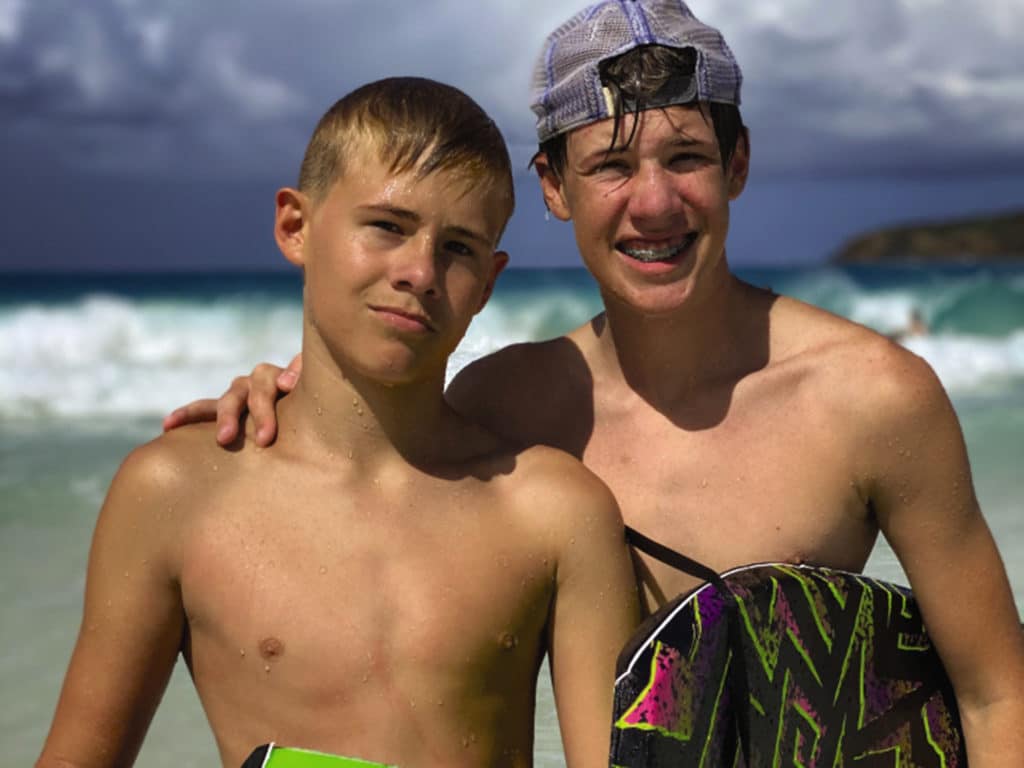
Despite the pandemic infringing on most of their sabbatical cruise, their experience was overwhelmingly positive—in ways that didn’t necessarily relate to the boat. “What we learned was the most important thing about cruising was the people we met and the quality time we had as a family. The other sailing families became our family: the sunset potluck dinners every night; the dinghy captains that would pull the kids for hours on water toys; the underwater Easter egg hunt because beaches were closed; the family time with our teenagers not being on their cellphones. That, and so much more. I would not change a thing.”
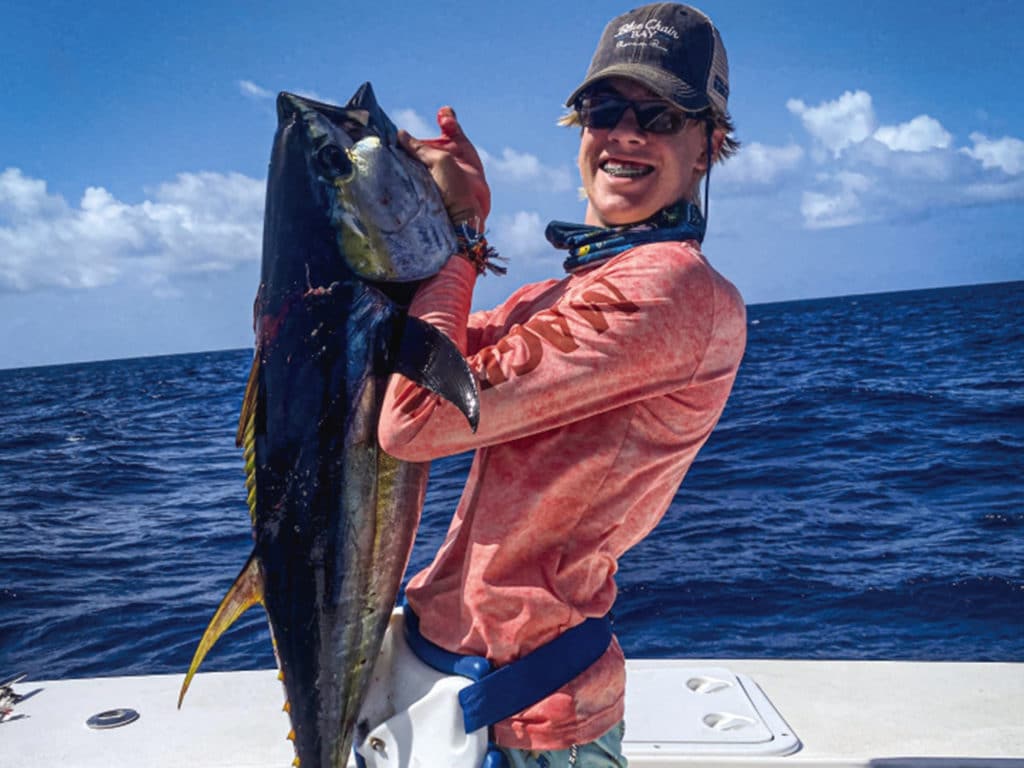
Looking back on the experience, the change-up from what they perceived to be the ideal boat was fortuitous. At the same time, Susan and Clay have firmed plans to build a future life on the water. “It turned out that we liked the extra amenities and conveniences of the comfortable catamaran we finished our charter with. We realized that we really were never going to do big passages, so the bluewater boat we originally envisioned as our ideal… wasn’t. Chartering, instead of buying the boat of our dreams, saved us from making an expensive mistake.”
The right boat
What is the perfect boat for a sabbatical? It’s an impossible question, largely because the definition of “the perfect boat” often changes once a crew has had the opportunity to gain cruising experience. We lucked out with our boat Totem. The original plan was a two- to five-year sabbatical, and we contemplated going in Mau Ke Mana, the Hallberg Rassy 352 we owned at the time. Yet I am certain we would not still be cruising 13 years later had we not upsized to our Stevens 47. While Mau Ke Mana would have suited our original plan, that plan changed in a few ways. A surprise third child was the tipping point in sizing up (and extending our planning timeline from five years to six). Two cabins were a manageable squeeze when they were very small, but not enough for a family of five with the tweens we anticipated growing up afloat.
Another important boat-fit consideration is not overthinking the selection in favor of a strong bias to actually sail away. Who isn’t familiar with the dock princess, endlessly updated for a cruise that never comes? Every one of the crews profiled here reflected on how the reality of cruising exceeded their expectations. Abeona’s skipper, Jeff Milum, adds: “It’s easy to fetishize purchases by overanalyzing and spending so much energy getting what you think will be the exact right boat, sprinter van, oven range, biking shorts, whatever. The fact is that people have had amazing experiences cruising in all kinds of boats.
“We had friends buy a $35,000 trimaran in Montreal, then sail to Grenada and back with four kids. You don’t really need a boat that is any better than good enough to safely sail an intended route. The specifics of the boat won’t really affect the outcome of your journey. Years after cruising, your memories will not be dominated by what direction your chart table faced—they will instead focus on your actual experiences and where you sailed, who you sailed with, and what you did.”
Cruising takes a plan, and plans can take time. Just don’t stretch that plan too long, or get mired in spreadsheets, or postpone departure with a case of 4-foot-itis. The difference won’t matter when the sunset tints a tropical island with a golden palette, or dolphins launch from your boat’s bow wave. Experiences bring magic to the cruising life, not the magic carpet you rode in on.
Behan Gifford, husband Jamie, and daughters Mairen and Siobhan are currently in Puerto Peñasco, Mexico, giving Totem, their well-traveled Stevens 47, some much-needed TLC.








